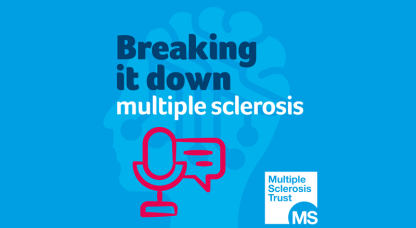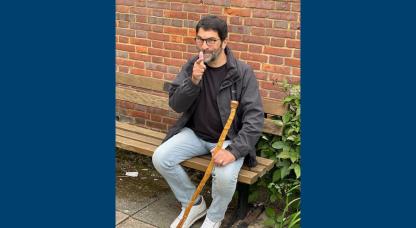This study looked at how well the upper extremity (meaning the hand, arm and shoulder) functioned. It looked at someone's strength and also whether they experienced sensations in the hand in a similar way to a person who did not have MS.
The effects of MS on hands, arms and shoulders
1 November 2012
The study in detail
How the study was carried out
22 people with MS took part in the study. The average age was 39 but ranged from 30 to 47. Disability was measured using the EDSS scale and averaged 2.0. This means that this group was not severely affected by MS as, on average, they had minimal disability in one functional system, such as vision or bowel and bladder function, and could walk unaided. You can read more about the eight functional systems and the EDSS score in the A-Z of MS. Ten healthy controls also took part.
Upper extremity function was tested using the nine hole peg test. In this test, you sit at a table with a small, shallow container holding nine pegs and a block containing nine empty holes. You are asked to pick up the nine pegs, one at a time, as quickly as possible, put them in the nine holes and, once they are in the holes, remove them again as quickly as possible one at a time, replacing them into the shallow container. The total time to complete the task is recorded. You can watch a video (26 seconds) of the nine hole peg test.
Testing upper extremity strength included looking at strength and mobility in the shoulder and the elbow, the ability to grip with the hand and to pinch together the fingers and thumb.
The ability to feel sensations on the skin was tested in three ways. Firstly, the threshold at which someone could feel light touch; secondly, how long they could feel the vibration of a tuning fork; thirdly how short a distance could be distinguished between two impressions on the skin.
What was found
The researchers found that people with MS performed less well on the tests of strength and function of the upper limb and also on the tests of light touch, distinguishing two points on the skin and sensing vibrations.
They also found that the results on some of the test results were related, meaning that if someone performed better or worse on one test, they also performed correspondingly better or worse on certain other tests. In this study, performance on the light touch pressure sensation tests of the thumb and index fingers, the two point discrimination of the index finger and the elbow flexion (bending the elbow) strength test were related to the upper extremity function (nine hole peg) test results.
What does it mean?
The study showed that the ability to feel sensations in the hand, as well as the strength and function of the upper limb were affected in people with MS although their overall level of disability was low. The study also showed that some of these changes are related. The researchers comment that exercises that strengthen the upper extremity and also sensorial training of the hand may be helpful in maintaining upper extremity function.
Guclu-Gunduz A, Citaker S, Nazliel B, et al.
Upper extremity function and its relation with hand sensation and upper extremity strength in patients with multiple sclerosis.
NeuroRehabilitation. 2012;30(4):369-74.
More about sensory changes and keeping mobile
You can read more about sensory changes, also known as dysaesthesia, in the A-Z of MS.
There are suggestions on suitable exercise for people with MS including the Move it for MS DVD.
Physiotherapy can be helpful for managing spasticity, spasms and balance as well as maximising mobility. Rehabilitation can also help someone to live their life as fully as possible.
Latest news & stories
Sign up to updates from us
Keep up-to-date with the latest MS news, explore new research, read the stories of people living with MS, find out practical tips from MS experts, and discover exciting fundraising opportunities
If you would like to sign up for post or telephone (SMS) updates you can complete our sign up form here


